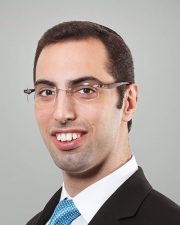
Ariel Property Advisors


The real estate community is increasingly buzzing about the potential of investing in new “Economic Opportunity Zones,” which were created through a provision added by Senators Corey Booker and Tim Scott to the federal government’s Tax Cuts and Jobs Act (TCJA) of 2017. Some believe that this provision has the potential to be the biggest law to affect real estate in several decades—one that will reverberate to low income areas of Northern Manhattan, New York City and the nation as a whole.
The program – which aims to encourage long-term investment in low-income communities throughout the United States – allows investors to roll their capital gains from real estate and, crucially, other sources of capital—including unrealized gains from stocks—into a Qualified Opportunity Fund (QOF). The fund, in turn, invests this capital into a variety of assets, including commercial real estate, infrastructure, existing or new businesses and housing.
Depending on how long an investor keeps their investment in the Opportunity Zone (OZ), they can receive an increase to the basis on the capital gain that’s initially deferred and, if they meet certain timing requirements, can potentially receive tax-free treatment on the additional gains earned from the fund.
Note that the above is a very brief overview of the main concepts behind this tax provision. Many factors that will govern its implementation are currently unknown, but the treasury department is expected to release the main rules and standards in the very near term. Anyone interested in learning more about this should consult with their accountants and tax attorneys immediately, especially considering the provision currently has certain deadlines that are scheduled for the end of 2019.
The targeted geographic locations, however, have been selected. New York City’s real estate and economic landscape may be drastically impacted by the program. Specifically, Northern Manhattan neighborhoods are very well positioned to be some of the biggest beneficiaries of these incentives.
Below is a brief breakdown of the OZs in Northern Manhattan submarkets:
• East Harlem: The largest Opportunity Zone tract in East Harlem is located north of East 119th St. between Park Ave. and the Harlem River. One smaller tract of properties is between Third and First Aves. from East 109th to East 115th St. Another around Mt. Sinai Hospital between Fifth and Park Aves. from East 98th St. to East 106th St. was also included and could yield some major new projects. Combined with the area’s recent rezoning, several large-scale public-private developments in the pipeline and the eventual arrival of the New York Proton Center, these Opportunity Zones could fuel significant investment in the area.
• Central Harlem: Though eight census tracts in Central Harlem were designated as Opportunity Zones, we expect investors to specifically focus on properties between Frederick Douglass Blvd. and Lenox Ave. from West 122nd to West 131st Sts., as well as those between Lenox and Park from West 126th to West 132nd Sts. This area already benefits from many subway lines, a strong pipeline of transformative new development projects and multiple retail destinations, so this added tax incentive makes investments here even more attractive.
• Inwood: A rather convenient piece of news for Inwood investors is that all areas included in the August 2018 rezoning are also located in a newly designated Opportunity Zone. Inwood has seen a slew of notable multifamily and development site sales at strong prices. With several hundred units in the development pipeline and the city committed to new neighborhood infrastructure, investors would be wise to seek opportunities here.
• Washington Heights & Hudson Heights: Properties located in two included census tracts located just south of Columbia Presbyterian Hospital are well positioned to see higher demand from the program. A narrow strip of properties between Amsterdam and Broadway from West 173rd and Fort George Ave. are also included, but the impact may be mitigated by the area’s relatively high concentration of occupied residential buildings. Development and conversion sites, however, will be highly sought after.
• Manhattanville: Columbia University’s expansion was a significant catalyst for new demand and rising prices in the area. We expect this neighborhood’s OZ to drive even more demand for properties located in the Manhattanville Factory District and those along the north side of West 125th St.
Opportunity Zone investments carry the potential to both drive economic growth in low-income areas and provide interested investors with an alternative to doing 1031 exchanges. Stay tuned as we learn more about this program and the various ways investors and communities can take advantage of all it has to offer.
Michael Tortorici is an executive vice president - investment sales, and David Baruch is a senior analyst - investment research at Ariel Property Advisors, New York, N.Y.




